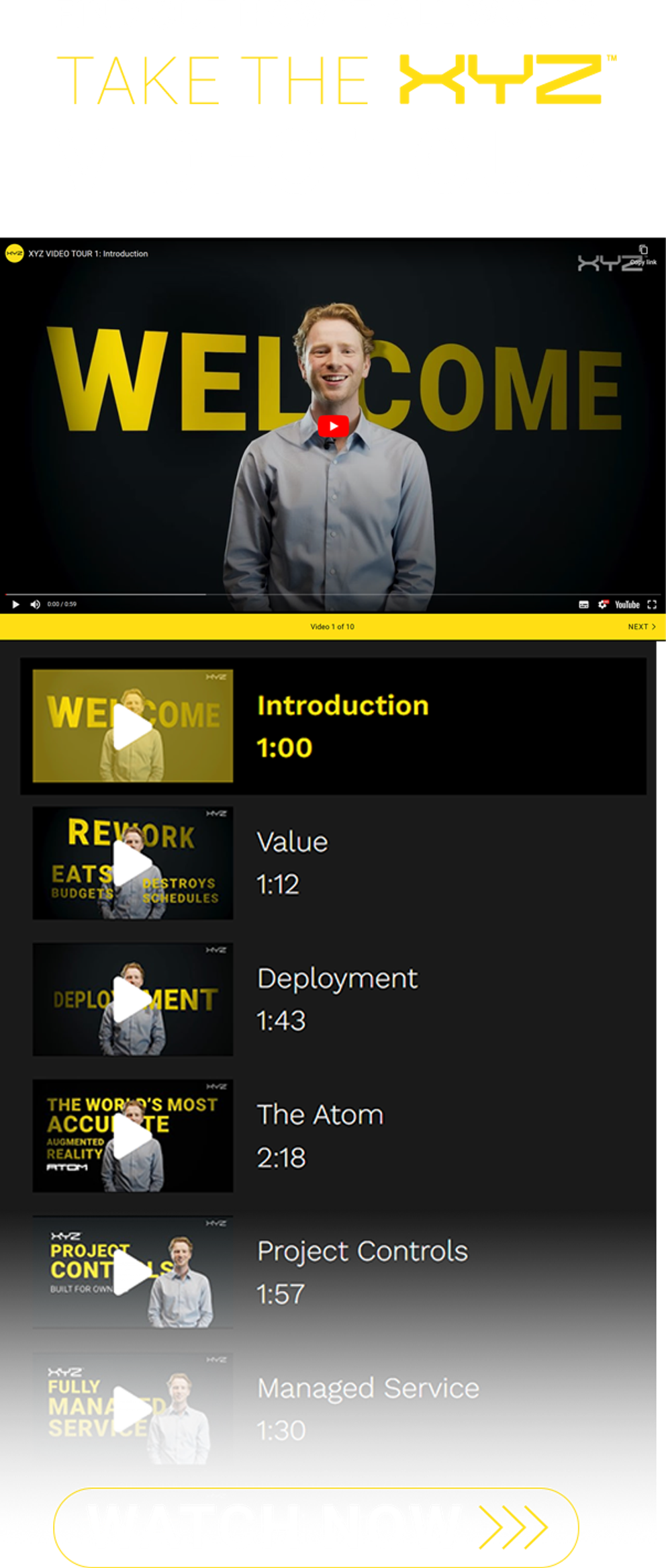-
Services
Services
Find out how we work with our clients and deliver value to construction projects from day one
-
Solutions
Solutions
Discover how all our solutions sync together to deliver construction's most powerful BIM platform to date
-
Built for
Built for
-
Industry
Industry
Understand how we support construction's biggest sectors, and hear from our clients who have experienced the power of XYZ
-
Resources
Resources
Get stuck into all our latest thought leadership, news, reports and industry leading content
-
Company
Company
Dive into what makes XYZ tick, unearth why construction is in our DNA and why we are world leaders in AR solutions

Insights
Transforming Infrastructure – The IPA 2030 Roadmap

01 February 2022
The TIP Roadmap to 2030 lays out a vision for a more effective and more efficient built environment and highlights how digital technology can have a transformative impact on the construction industry.
We live in precarious times. Many critical challenges – among them climate change, fragile global economies and rising populations – are becoming ever more pressing. Such challenges are inextricably linked to our built environment and the way its supporting industries function and perform. Addressing these issues now is essential to ensuring stability, comfort and safety for future generations.
The good news is that many of the necessary solutions to these challenges are being developed or already exist. If organizations are able to embrace and apply them, technology and new ways of working can deliver a more effective, efficient built environment.
Improving UK infrastructure: Introducing IPA and TIP
To drive this agenda, the UK government relies upon its Infrastructure and Projects Authority (IPA). The IPA sits at the heart of government, reporting to the cabinet and the treasury with the aim of delivering continuous improvement and world-leading standards of excellence.
Set up by the IPA to lead this system change, Transforming Infrastructure Performance (TIP) is the IPA’s flagship program. In the introduction to its recently published Roadmap to 2030, IPA CEO Nick Smallwood says: “TIP’s Roadmap to 2030 describes a vision for the future in which we collectively prioritize the societal outcomes we need, and use modern digital approaches and technologies, alongside improved delivery models to achieve them.”
“At the heart of the TIP Programme lies the need for a step change in productivity and efficiency in the ways we plan, design, manufacture, construct and operate infrastructure. It will require data from all parts of the system to inform decision making, from improved information management in delivery to the creation of digital twins for asset maintenance and optimization.”
5 key areas of focus in the Transforming Infrastructure Performance Roadmap to 2030
The TIP 2030 Roadmap looks at UK infrastructure in its entirety, providing a vision for success over a decade in which £650 billion in investment is predicted. It dissects infrastructure, a complex and sprawling topic, into 5 key areas of focus and outlines the fundamental problems and opportunities for each.
Of these key focus areas, it is Focus area 5: Optimising the performance of our existing built environment that is likely to be most relevant to those working or investing in construction.
Central to optimization is information. With access to better information, organization leaders are capable of making better decisions resulting in more resource-efficient outcomes, higher profitability and faster project turnaround.
Unlocking efficiency through Construction Technology
The 2030 Roadmap names a range of different processes, principles and products which can help the construction industry achieve optimization. Special mention is made of the Information Management Mandate, Government Soft Landings and the application of technology such as augmented reality.
The Atom™ (our Engineering Grade augmented reality headset) is highlighted for its capacity to empower the proactive identification of errors during installation, thus preventing mistakes from occurring and virtually eliminating the need for remediation.
Unlike laser scanning solutions, which are frequently used to validate work on large-scale projects after works are complete, the Atom doesn’t just record what has already been done, but crucially also maps what is yet to be done with millimeter accuracy in a way that can literally be visualized.
It works by accurately overlaying a hologram of the 3D model on the physical construction site. This allows contractors to build with precision so that the as-built model matches the as-designed model, thereby ensuring works are carried out right, first time.
As the Get It Right Initiative (GIRI) frequently points out, construction errors increase inspection times, waste materials and result in latent defects, costing the industry as much as £21 billion each year.
Encouraging innovation in construction via public procurement commitments
The roadmap acknowledges that the industry has ‘collectively made good progress’ to support the transformation of UK infrastructure but also states that ‘pockets of world-class delivery using the latest digital and technology solutions… are not yet business as usual.’
To help drive uptake in digital technology, the IPA hints at its intention to mandate certain systems on publicly funded projects. It states that it will use ‘public procurement as a lever to drive innovation.’
In other words, the adoption of digital technology not only has the power to help the construction industry improve quality and save time and money - but it may also help organizations secure lucrative tenders.






